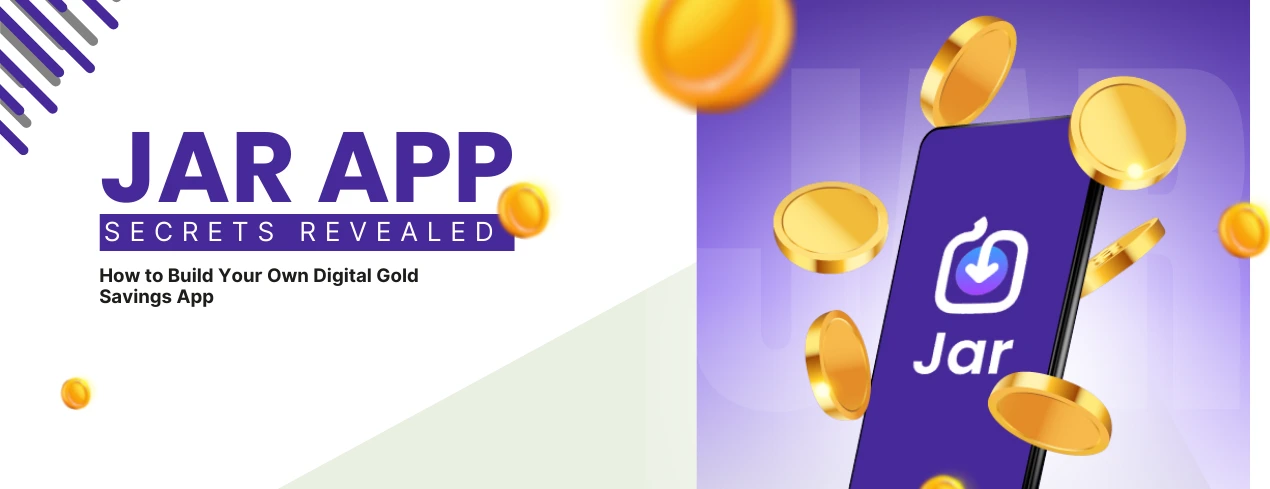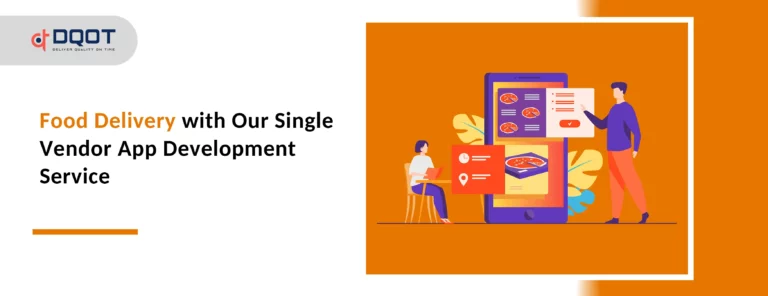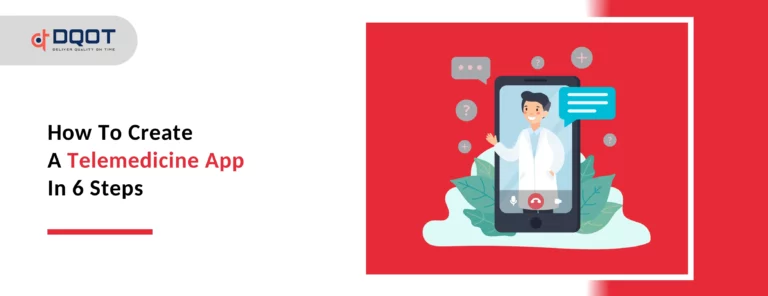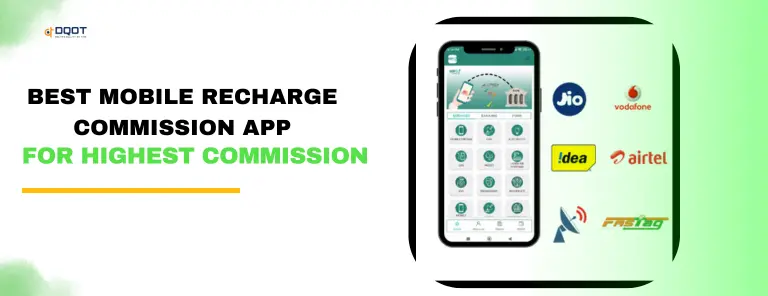If you’ve ever searched for ways to save effortlessly, you’ve probably come across the Jar App—a popular Digital Gold Savings App in India. It gamifies micro-savings by rounding up your daily spending and investing the spare change in digital gold. With over 15 million downloads and rapidly growing traction, it’s become a household name for millennials and Gen Z users who struggle to build saving habits.
But here’s the real question: What if you could build your own app like Jar? Imagine owning a savings platform that combines trust, automation, and the rising demand for digital gold investments. In this article, we’ll break down what the Jar App is, how it works, its limitations, and—most importantly—how you can develop a similar or even better alternative with Dqot Solutions.
Table of Contents
What is Jar App and Why Did It Become So Popular?
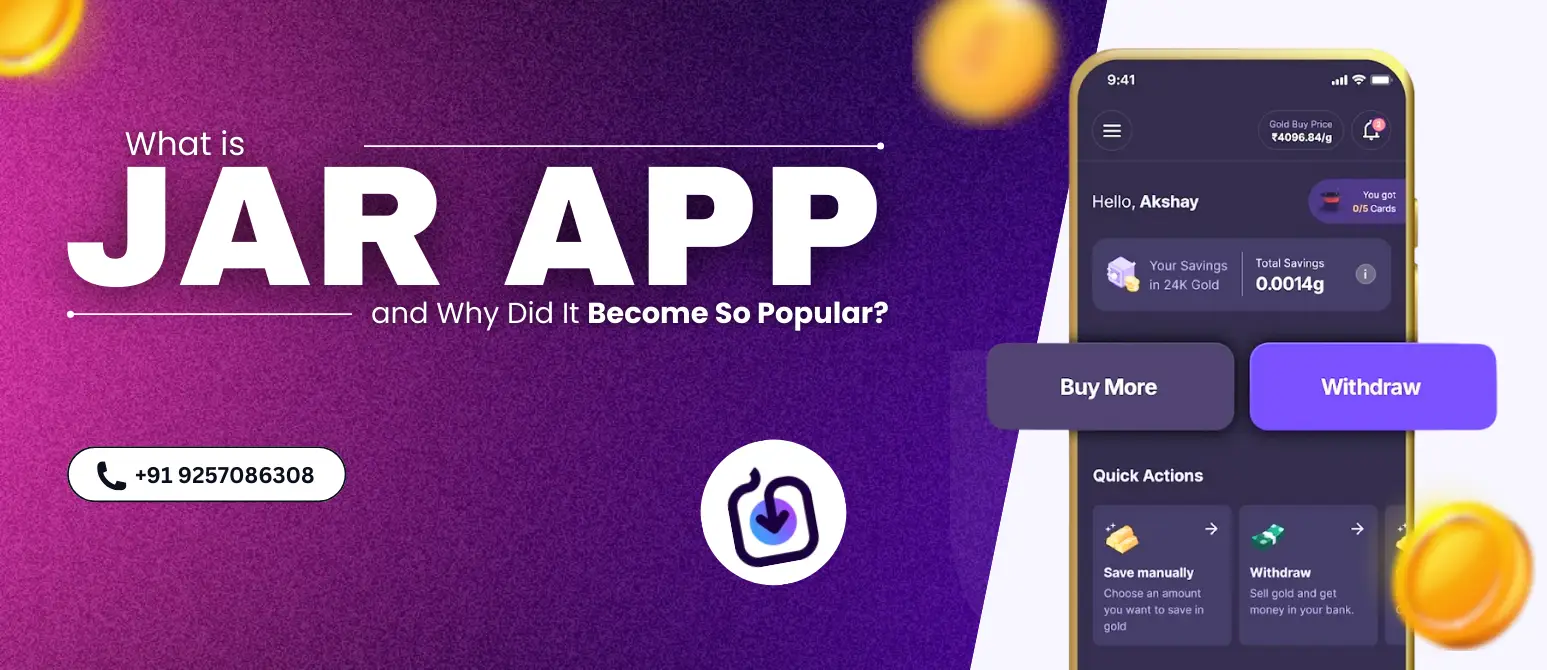
The Jar App is a fintech platform designed to help users save money effortlessly. Every time you make a payment through UPI, the app automatically rounds up the amount to the nearest 10 and invests the difference in digital gold. For example, if you buy a coffee for ₹93, Jar saves ₹7 for you.
The popularity of Jar App comes from its habit-forming design. Instead of asking users to make conscious financial decisions every day, it embeds savings into their lifestyle. According to a report by Inc42, apps like Jar are part of a $20 billion digital gold and micro-savings market in India, with more than 60% of users being under 30 years old.
Its appeal is also rooted in trust—gold has always been considered safe in India. By digitizing it, Jar removed barriers like physical storage, high entry cost, and security risks.
How Does Jar App Work?
At its core, the Jar App combines three technologies:
- UPI Integration – It connects with your digital payments and tracks every transaction.
- Micro-Savings Algorithm – The app calculates the spare change and transfers it to your Jar wallet.
- Digital Gold Platform – The money is invested in certified digital gold, which you can later withdraw in cash or convert into physical gold.
This flow is simple, but the real magic lies in habit psychology. By keeping transactions invisible and effortless, Jar ensures users stick with the app longer.
Disadvantages of Jar App You Should Know
While the Jar App has transformed the way people save, it’s not without drawbacks:
- Limited Investment Options: You can only invest in digital gold, missing out on other asset classes like mutual funds or equities.
- Dependency on UPI Transactions: If users reduce digital spending, savings slow down.
- Lack of Personalization: Many users feel the app doesn’t adapt to their unique financial goals.
- Charges and Spread: Users often point out hidden costs in buying and selling digital gold.
These gaps open a golden opportunity—if you’re building a similar app, you can create a better alternative by addressing these shortcomings.
How to Build a Jar App Alternative (Step-by-Step)
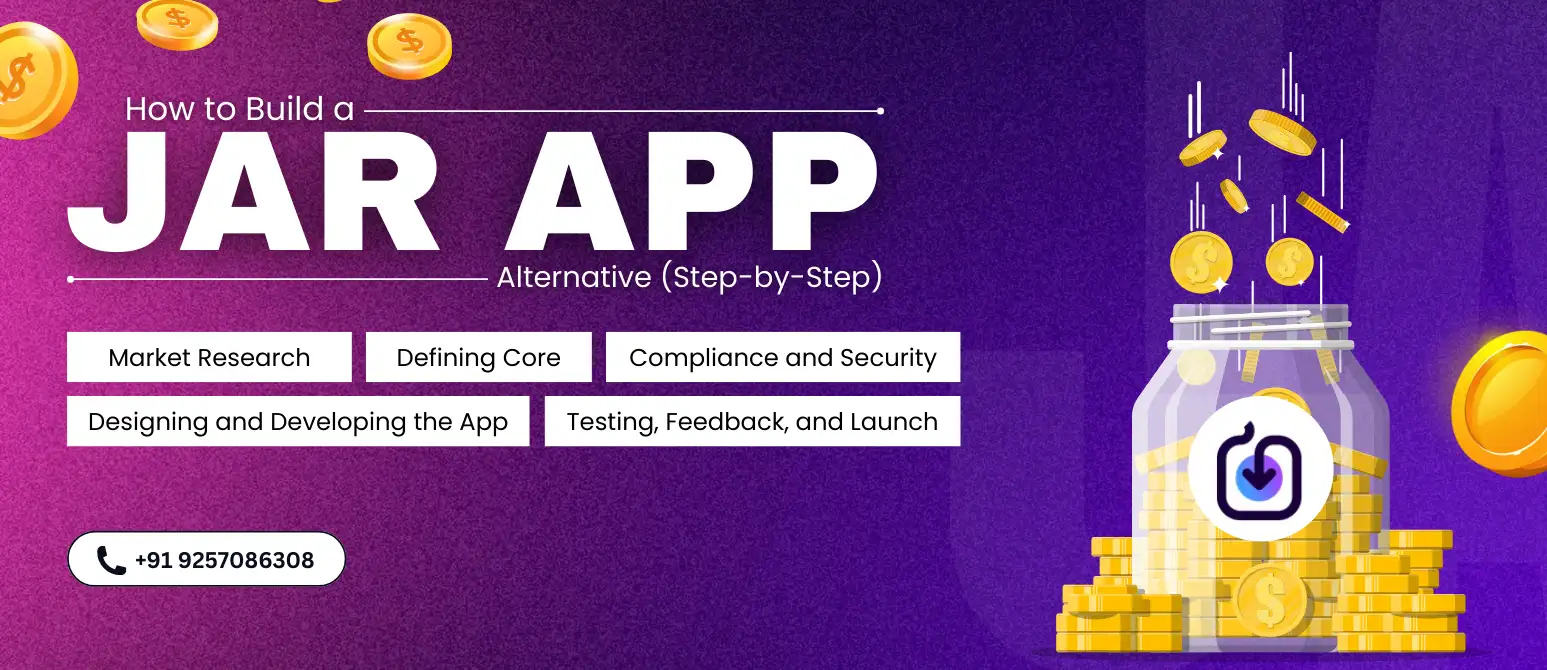
Creating a digital gold savings app requires strategic planning, technical expertise, and adherence to financial regulations. With Dqot Solutions, a proven leader in fintech development, you can navigate this process efficiently. Here’s a comprehensive roadmap:
Step 1: Market Research and Opportunity Identification
Start by analyzing your target audience—millennials, Gen Z, or even older demographics seeking simple savings tools. Study competitors like Jar to identify unmet needs. For example, offering multi-asset investment options (gold, stocks, or bonds) or personalized savings plans could differentiate your app. Surveys and focus groups can validate these ideas, ensuring your app aligns with user expectations.
Step 2: Defining Core and Advanced Features
Your app should include essential functionalities while introducing innovations to stand out. Core features include:
- Seamless UPI integration for tracking transactions.
- Automated round-up savings for effortless contributions.
- Digital gold investment with transparent pricing.
- A secure digital wallet for managing funds.
- Goal-setting tools to help users save for specific purposes (e.g., travel, gadgets).
- Real-time notifications to keep users engaged.
Advanced features could include:
- Gamification elements, like rewards or badges for consistent saving.
- Financial education content to empower users.
- Integration with other investment platforms for diversified portfolios.
- Customizable savings rules, allowing users to adjust round-up amounts or frequency.
Step 3: Ensuring Compliance and Security
As a financial app, compliance is non-negotiable. In India, you must adhere to Reserve Bank of India (RBI) regulations, Know Your Customer (KYC) norms, and data protection standards like the Personal Data Protection Bill. Security measures, such as encryption and compliance with Payment Card Industry Data Security Standards (PCI DSS), are critical to protect user data and transactions. Partnering with a development team experienced in fintech compliance, like Dqot Solutions, ensures your app meets these requirements.
Step 4: Designing and Developing the App
A user-friendly interface is vital for adoption. The app should feel intuitive, with clear navigation and a visually appealing design. Dqot Solutions typically employs:
- Frontend: React Native or Flutter for cross-platform compatibility (iOS and Android).
- Backend: Node.js or Python-based frameworks for scalability and real-time processing.
- Integrations: Banking APIs for UPI and payment gateway support, plus gold investment platforms like SafeGold or Augmont.
The development process prioritizes smooth transaction flows and minimal latency to enhance user trust.
Step 5: Testing, Feedback, and Launch
Rigorous testing is essential to ensure flawless performance. This includes:
- Functional testing for UPI integrations and savings calculations.
- Security testing to identify vulnerabilities.
- Usability testing to refine the user experience.
A beta launch with a small user group allows you to gather feedback and make improvements before a full-scale rollout. Post-launch, continuous updates and customer support are crucial for retention.
What is the Cost of Building a Jar App-Like Platform?
The cost of developing a Jar App alternative depends on features, tech stack, and region of development. On average:
- Basic App (MVP): $20,000 – $35,000 (₹16–28 lakhs)
- Mid-Level App with AI & Gamification: $40,000 – $60,000 (₹32–48 lakhs)
- Enterprise-Grade App with Multi-Asset Savings: $80,000+ (₹65 lakhs and above)
At Dqot Solutions, we offer flexible engagement models, ensuring startups and enterprises can build scalable fintech solutions without breaking the bank.
Why Dqot Solutions Excels in Building Digital Gold Savings Apps
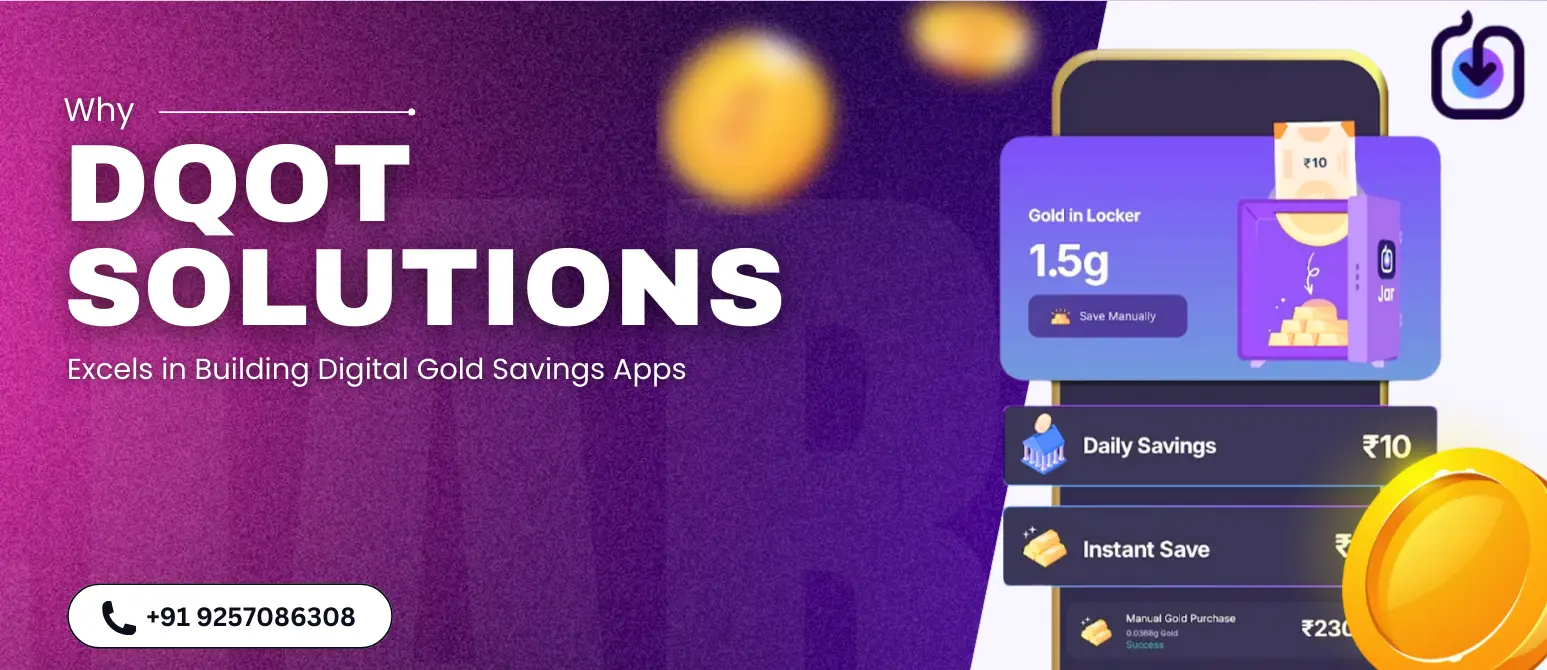
Dqot Solutions has helped startups and enterprises launch fintech platforms across India, the US, and the Middle East. Our strengths include:
- Proven experience in fintech compliance and security.
- Expertise in custom app development for startups with tight timelines.
- Transparent pricing and agile methodology.
- Dedicated post-launch support for growth and scaling.
Clients often highlight how our solutions not only deliver technical excellence but also add strategic insights, helping them attract funding and grow user bases quickly.
Future Growth of Digital Gold Savings Apps
The digital savings market is poised for significant growth. The World Gold Council projects India’s digital gold market to expand at a 15% compound annual growth rate (CAGR) by 2030, fueled by increasing smartphone penetration and trust in gold as an asset. As younger generations prioritize convenience over traditional banking, apps like Jar are just the beginning.
Future innovations could include:
- Blockchain Integration: Offering NFT-backed gold certificates for enhanced transparency.
- Cross-Border Investments: Enabling users to invest in global gold markets.
- Personalized Financial Tools: Using data analytics to recommend savings strategies based on spending patterns.
- Social Features: Allowing users to form savings groups or compete with friends.
By staying ahead of these trends, your app can capture a growing market and build long-term loyalty.
Top Tips for Choosing Your Development Partner
If you’re planning to build a Jar App alternative, here’s what you should consider in a development company:
- Experience with fintech apps and secure payment gateways.
- Ability to scale features as your user base grows.
- Transparent cost structures and milestone-based delivery.
- Strong portfolio with startup success stories.
This is where Dqot Solutions ticks all the boxes.
Final Words
The Jar App has redefined how young Indians save, but its limitations reveal opportunities for innovation. By building a savings app that offers diversified investments, personalization, and transparency, you can tap into a $20 billion market and create a platform that resonates with users. With Dqot Solutions as your development partner, you gain access to expertise, agility, and a commitment to turning your vision into reality. Whether you’re a startup or an established business, now is the time to seize this opportunity and build the next big thing in fintech.
For more information on pricing or to start your project, visit DQOT Solutions or contact their team directly.
Read More : Best Free Astrology Apps in 2025: Get Your First Chat Free and Discover Your Future
FAQs on Jar App and Digital Gold Savings App Development
Many readers exploring Jar App alternatives often have questions about its functionality, reliability, and development costs. Here are some of the most asked queries answered in detail.
Jar App is a micro-savings platform that invests spare change from UPI payments into digital gold.
Yes, Jar partners with trusted gold providers and ensures secure transactions. However, it’s limited to digital gold, unlike other diversified investment apps.
Its biggest drawbacks include limited investment choices, dependency on UPI, and lack of personalized saving options.
We bring proven fintech expertise, compliance knowledge, and startup-friendly pricing models to deliver scalable, secure, and user-friendly apps.
Yes, by partnering with experts like DQOT Solutions, who handle tech while you focus on ideas.


